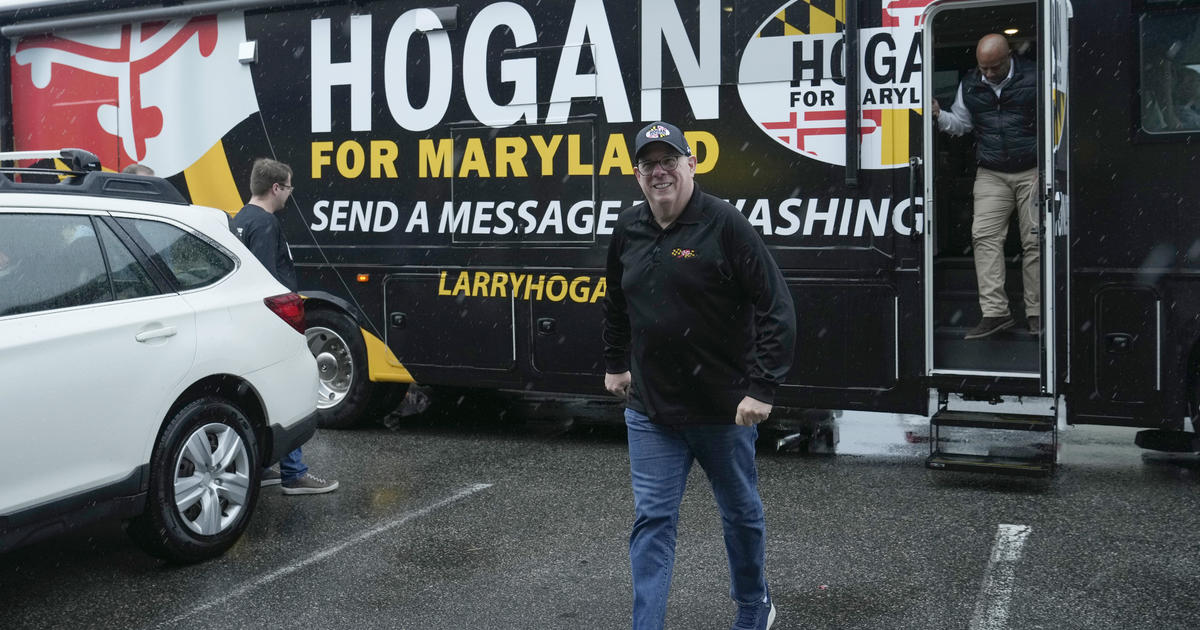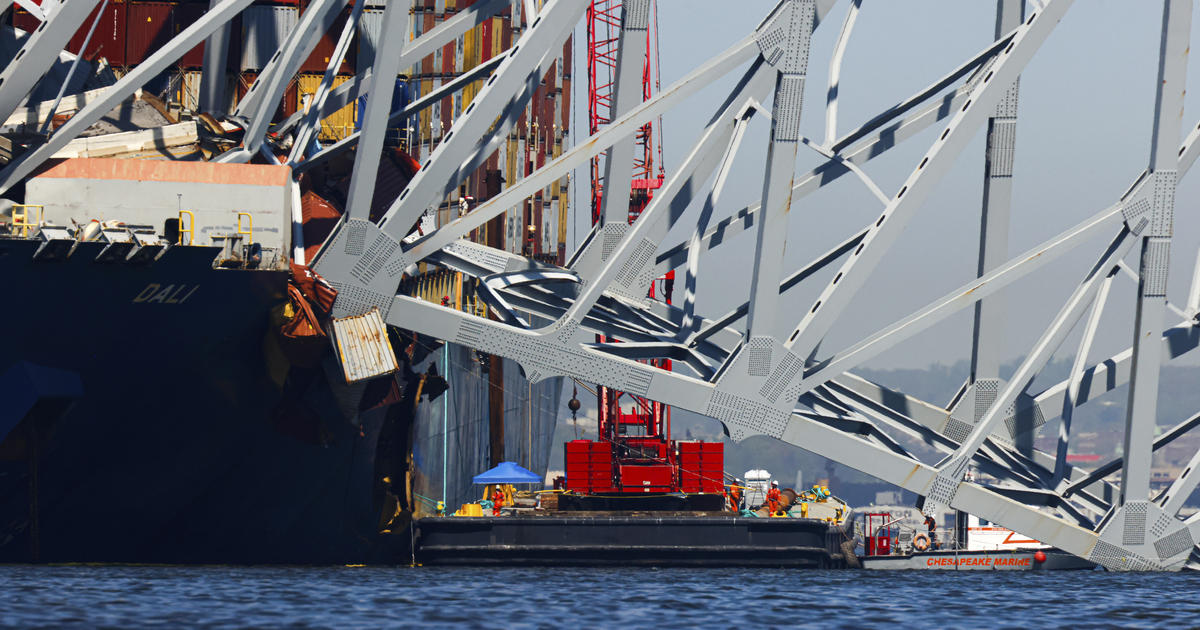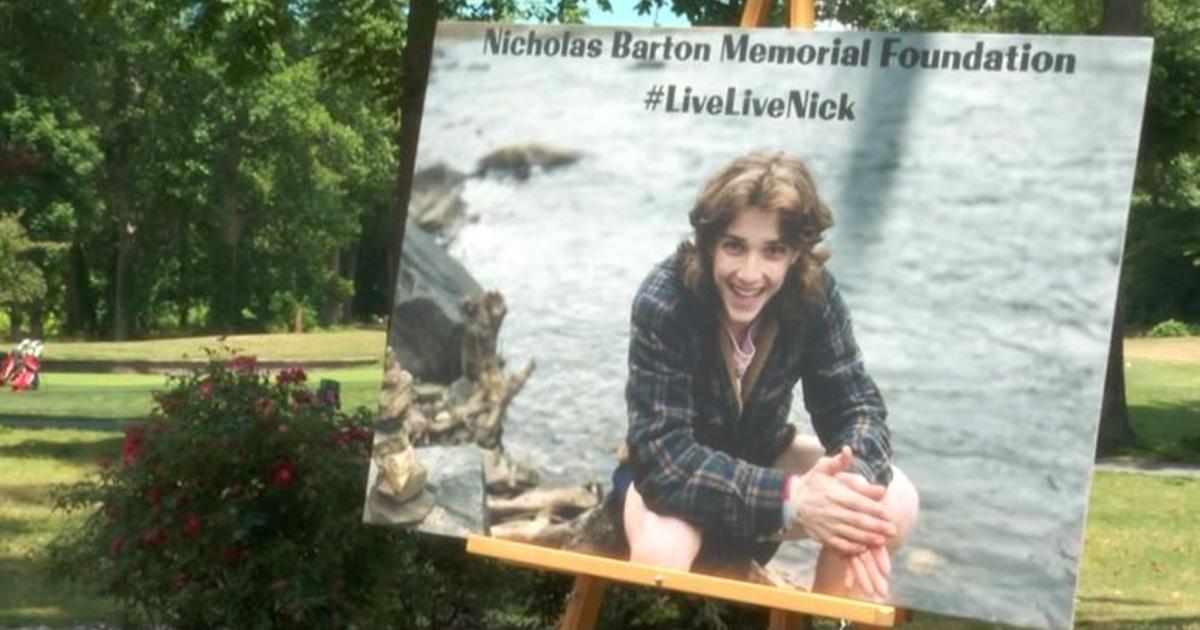For Md. Plant, Japan Reminder Of Potential Perils
LUSBY, Md. (AP) -- George Gellrich gets up at least once a night to check his computer. He could wait until the morning briefing at work, or even for the morning news shows. But he just can't. He needs to know: Was there another explosion at the crippled nuclear plant in Japan? Did they restore power to the pumps? Is there enough water in the spent fuel pool at Unit 4? Has the radioactive contamination grown worse?
Gellrich, 52, is site vice president of the Calvert Cliffs Nuclear Power Plant, in charge of everything that happens at the sprawling complex by the Chesapeake Bay.
But the scramble on the other side of the world to contain the spiking radiation levels at the Fukushima Daiichi nuclear plant does not feel remote to him or his nearly 900 employees. It is a reminder of the question that is always in the back of their minds: What would they do if they were faced with a crisis on the scale of Fukushima's?
"I'm very curious as to why they did some of the things they did because I think we would have managed it differently. But I don't know the details of what they're up against," said Gellrich, who worked as the plant manager from 2001 to 2004 at Three Mile Island, the site of the 1979 accident that changed the safety practices of the nuclear power industry.
The 120,000 people who work at the country's 104 commercial reactors supply the nation with 20 percent of its electricity. But since Three Mile Island, the industry has been defined not by the service it provides, but by its potential for catastrophe.
At Calvert Cliffs, an intense focus on safety dominates the daily routines of everyone who works there. As they enter the plant in southern Maryland, a machine sends puffs of air down their sides in search of hidden explosives. Inside, different clocks count the days since the last breach of safety protocol. When they stand
inside another machine, which measures their radiation levels, they hear a recorded voice from above intone, "Safety is in our DNA."
There is no starker example of the perils nuclear power workers potentially face than the 700 employees at the Fukushima plant, who have volunteered to remain there to help stave off a full nuclear meltdown.
Dubbed the "Fukushima 50" because they work in 50-person shifts, they are toiling in what one nuclear expert described as "hellish" conditions. So far, at least 17 have been exposed to high levels of radiation since the March 11 earthquake and tsunami knocked out power at the plant, triggering the crisis.
Last week three workers came into contact with radioactive water in a turbine room that might have leaked from a reactor core, sending three of them to the hospital with burns. Radiation has also spread to water in three underground tunnels and outside buildings designed to contain contamination.
Yet many employees at Calvert Cliffs find their predicament inspiring, not terrifying.
"We'd be competing to be one of the 50, and I would be right in there," said Tom Trepanier, 52, Calvert Cliffs' general manager and a 30-year veteran of the nuclear power industry.
That sense of duty is widespread among nuclear power industry workers, said Margaret Harding of the American Nuclear Society, an Illinois-based group serving nuclear industry professionals.
"If they could help in Japan, they would be on planes right now," she said. "The problem is the controls are in Japanese."
The risks inherent in nuclear power work breed the same kind of camaraderie and insularity often found among police officers and firefighters.
The tightknit culture is also the reason many Calvert Cliffs employees have spent their entire careers at the plant, which is about 50 miles south of Washington and is owned and operated by Constellation Energy Nuclear Group. A good number live in the communities most likely to be evacuated in a major emergency.
"You're here protecting your family, too," said Timothy Hance, 41, a maintenance mechanic who grew up in the shadow of the plant and has worked there since he was a teenager. He can see the plant from his house. His uncle, who lives next door to him, is an electrical engineer at the plant.
The operators of nuclear reactors make a median annual salary of $73,320 -- more than teachers or police officers, but less than lawyers or dentists. They don't necessarily have to have a college degree, but since Three Mile Island, more do.
Others enter the industry through the military. Trepanier, who studied physics in college, was hired after a stint in the Navy's nuclear program.
Having once operated a plant similar in design to Fukushima, Trepanier has also taken to Web surfing in the wee hours for updates on the situation in Japan. He has been poring over satellite photos and YouTube videos to try to sort out what is happening.One of the enduring mysteries for him and Gellrich is why
backup diesel fuel to power Fukushima's cooling pumps was stored in commercial-grade tanks by the sea, where they were washed away by the tsunami, instead of in concrete bunkers on higher ground. Calvert Cliffs keeps all five of its emergency diesel generators, as well as some diesel fuel, in concrete bunkers 45 feet above the water.
Another mystery is why Fukushima's managers did not begin pumping water into the pools that hold used fuel rods as soon as possible after the tsunami. The workers at the plant have struggled to keep water in the spent fuel pool at the Unit 4 reactor to try to reduce the risk that the spent fuel rods will overheat and
release radiation.
Knowing what happened is vital because operating a nuclear power plant is essentially a never-ending struggle against the inevitability of human error. The lessons from Fukushima will be studied carefully by the industry here because, as Harding put it, "an accident anywhere is an accident everywhere."
In the United States, the information gleaned from even a small mishap elsewhere shapes everything, including plant design and the large charts, or "decision trees," kept in control rooms. The charts list scenarios -- from a vehicle crash to a reactor explosion -- and the appropriate response. They are intended to eliminate guesswork and indecision during a crisis.
At Calvert Cliffs, employees spend their days in a calm yet relentless state of readiness. Around their necks, they wear monitors the size of a stopwatch that track their radiation exposure in real time. When they head to the secured area around the two reactors, they pass signs that read, "All accidents are preventable" and "Asking me to overlook a simple safety error is asking me to compromise my entire attitude toward the value of your life." An electronic bulletin board, known as the "the big mouth," displays the "error trap of the month," the complacency, overconfidence or other mental lapses that can lead to a mistake.
In a nuclear plant, even small problems can have major consequences. A year ago, a roof leak at Calvert Cliffs led to an emergency shutdown. The leak caused an electrical short. The emergency diesel generators were activated, but one of the generators didn't work because of another electrical failure. The loss of backup generator power was one of the major causes of the crisis at the Fukushima plant.
Although Calvert Cliffs never came close to completely losing power, the incident prompted Trepanier to castigate his staff and use the incident as a "burning platform" to identify other problems and improve the plant's performance. (His remarks, which were briefly posted on the Nuclear Regulatory Commission Web site,
were first reported by the Capital News Service.)
Fukushima is a reminder that there is always the possibility of a catastrophic event that no one anticipated. Trainers at Calvert Cliffs have already created a simulation based on the disaster.
Gellrich also has assembled a team of employees to try to determine how well the plant's procedures, training and equipment would do should Calvert Cliffs ever face a Fukushima-type crisis.
He has been pleased with the results. But he still worries about the disaster's impact on public support for nuclear power, which more people were starting to embrace as a greener alternative to carbon-emitting coal-fired power.
"We're only as strong," Gellrich said, "as our weakest plant."
The Washington Post
(Copyright 2011 by The Associated Press. All Rights Reserved.)



